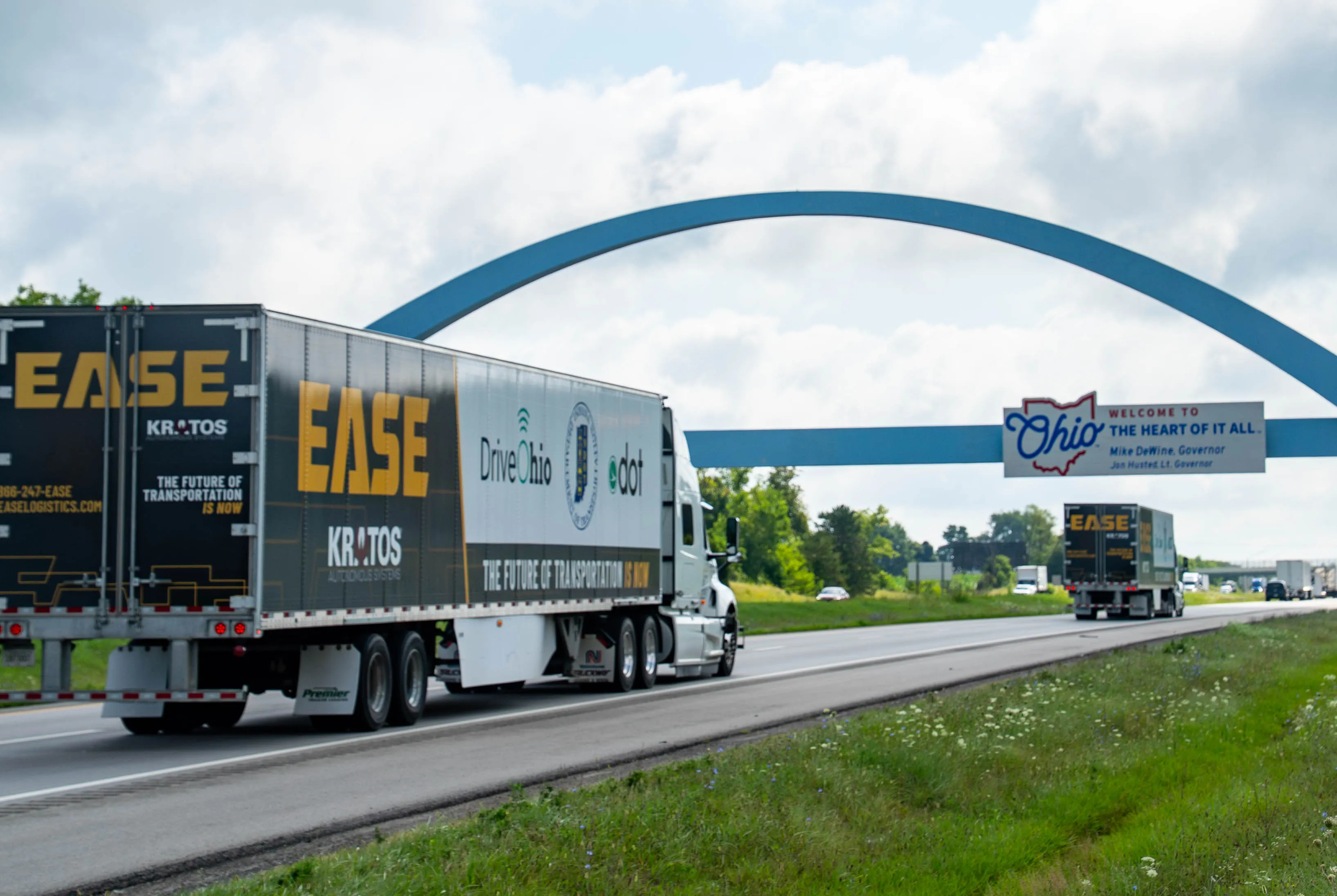Early next month six European truck manufacturers will bring platoons of semi-automated trucks to public roads, crossing borders from various European cities in order to reach their final destination of the Port of Rotterdam on 6 April. The overall objective of this European Truck Platooning Challenge is to accelerate the introduction of truck platoons by putting the subject high on the agenda of EU policy makers.
The Platooning Challenge, organised by the Netherlands as part of its ongoing EU Presidency
March 16, 2016
Read time: 2 mins
Early next month six European truck manufacturers will bring platoons of semi-automated trucks to public roads, crossing borders from various European cities in order to reach their final destination of the Port of Rotterdam on 6 April. The overall objective of this European Truck Platooning Challenge is to accelerate the introduction of truck platoons by putting the subject high on the agenda of EU policy makers.
The Platooning Challenge, organised by the Netherlands as part of its ongoing EU Presidency, fosters European cooperation between truck manufacturers, member states, logistics service providers, road operators, road and vehicle approval authorities, research institutes and governments.
According to the European Automobile Manufacturers’ Association (ACEA), cooperation on platooning is vital to prevent countries from creating a patchwork of rules and regulations, which could hinder investments in automated and connected vehicles.
6175 ACEA and its commercial vehicle members, 1941 DAF Trucks, 2069 Daimler Trucks, 4205 Iveco, 267 MAN Truck & Bus, 570 Scania and 609 Volvo Group, are actively supporting the European Truck Platooning Challenge as they believe that platooning will help the European truck industry to strengthen its technical leadership and global competitiveness.
ACEA claims that truck platooning can help make road transport safer, cleaner and more efficient in the future. It says platooning results in a lower fuel consumption, as the trucks drive closer together at a constant speed, with less braking and accelerating and has the potential to reduce CO2 emissions by up to 10 per cent. Likewise, connected driving can help improve safety, as braking is automatic with virtually zero reaction time compared to human braking. Finally, platooning also optimises transport by using roads more effectively, helping deliver goods faster and reducing traffic jams.
The Platooning Challenge, organised by the Netherlands as part of its ongoing EU Presidency, fosters European cooperation between truck manufacturers, member states, logistics service providers, road operators, road and vehicle approval authorities, research institutes and governments.
According to the European Automobile Manufacturers’ Association (ACEA), cooperation on platooning is vital to prevent countries from creating a patchwork of rules and regulations, which could hinder investments in automated and connected vehicles.
ACEA claims that truck platooning can help make road transport safer, cleaner and more efficient in the future. It says platooning results in a lower fuel consumption, as the trucks drive closer together at a constant speed, with less braking and accelerating and has the potential to reduce CO2 emissions by up to 10 per cent. Likewise, connected driving can help improve safety, as braking is automatic with virtually zero reaction time compared to human braking. Finally, platooning also optimises transport by using roads more effectively, helping deliver goods faster and reducing traffic jams.







